Describe the Type of Symmetry Exhibited by Cnidarians
Describe the two basic body plans of Cnidarians. The former is a sessile and cylindrical form like Hydra Adamsia Sea anemone etc.
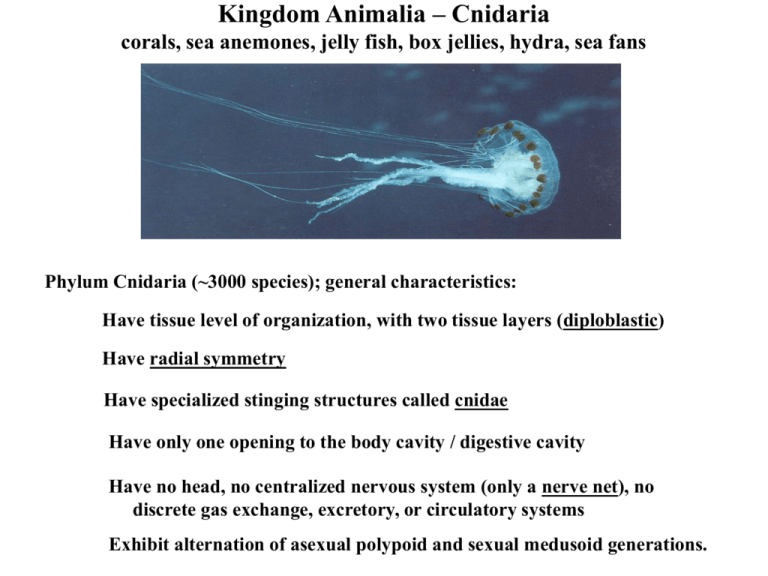
Kingdom Animalia Cnidaria Corals Sea Anemones Jelly Fish Box
Most species alternate between sessile polyps and motile medusae.

. Animals in the phyla Cnidaria and Echinodermata generally show radial symmetry although many sea anemones and some corals within the Cnidaria have bilateral symmetry defined by a single structure the siphonoglyph. Nearly all about 99 percent cnidarians are marine species. What do Cnidarians eat.
Whereas the defining cell type for the sponges is the choanocyte the defining cell type for the cnidarians is the cnidocyte or stinging cell. Label the cross-section of the two forms of Cnidarians. These cells are concentrated around the mouth and tentacles of the animal and can immobilize prey with toxins.
This indicates how strong in your memory this concept is. All cnidarians can regenerate allowing them to recover from injury and to reproduce asexually. As a behavioral adaptation to avoid this predation Stomphia has evolved the ability to release from the bottom and swim away.
Nearly all about 99 percent cnidarians are marine species. Their distinguishing feature is cnidocytes specialized cells that they use mainly for capturing preyTheir bodies consist of mesoglea a non-living jelly-like substance sandwiched. Up to 24 cash back 23.
The canal system is a leuconoid type. Nearly all about 99 percent cnidarians are marine species. Describe the cnidarian body planand its two major variations.
Medusae have limited ability to regenerate but polyps can do so from small pieces or even collections of separated cells. Radial symmetry means that they have a circular body plan and any cut through the center of the animal leaves two equal halves. Cnidarians contain specialized cells known as cnidocytes stinging cells containing organelles called nematocysts stingers.
These cells are present around the mouth and. Cnidarians reproduce sexually and asexually. These cells are present around the mouth and.
Up to 24 cash back Describe the type of symmetry exhibited by Cnidarians. The body is cylindrical in shape and exhibit radial symmetry. Whereas the latter is umbrella-shaped and free-swimming like Aurelia or jelly fish.
Cnidarians are radially or biradially symmetric a general type of symmetry believed primitive for eumetazoans. Describe the type of symmetry exhibited by Cnidarians. Phylum Cnidaria includes animals that show radial or biradial symmetry and are diploblastic that is they develop from two embryonic layers.
Cnidarian bodies have two or sometimes three layers. The body is asymmetrical and cylindrical in shape. The sea star Dermasterias often preys on the anemone Stomphia.
Collar cells choanocytes are characteristic of a poriferans b cnidarians c most coelomates. Label the cross-section of the two forms of Cnidarians. Nearly all about 99 percent cnidarians are marine species.
Up to 24 cash back Cnidaria. They are found in marine or freshwater. In the Cnidaria sexual.
What do Cnidarians eat. The phylum Cnidaria includes animals that show radial or biradial symmetry and are diploblastic. 25How do Cnidarians eat.
What some coral reproduction is tied to. They lack cephalization concentration of sensory organs in a head their bodies have two cell layers rather than the three of so-called higher animals and the saclike coelenteron has one opening the mouth. The trigger of a.
This is unusual behavior for an anemone. Hydra jelly fish etc are aquatic animals they have cnidocytes to question_answer Q. Cnidarians are radially symmetrical ie similar parts are arranged symmetrically around a central axis.
Cnidarians exhibit two basic body forms called polyp and medusa. Cnidarians have specialized cells known as cnidocytes stinging cells containing organelles called nematocysts. An anemone uses its nerves and muscles to release from the bottom and swim away.
How do Cnidarians eat. Arrow_forward Explain the importance of the presence of symmetry radial and biradial and presence of true tissues in the biological proccesses of cnidarians and ctenophores. Among theories proposed on the evolution of the phylum Cnidaria most treat the radial symmetry and tissue level of organization as evidence that the group is primitive that is it evolved before the evolution of bilateral symmetry and hold that the medusa is the.
Feeding polyps in physalia. The canal system is Sycon or Leucon. Explain how they are different from one another.
Based on both the polyp and medusa body plans cnidarians are classified as having radial symmetry. Phylum Cnidaria includes animals that show radial or biradial symmetry and are diploblastic that is they develop from two embryonic layers. Cnidarians contain specialized cells known as cnidocytes stinging cells containing organelles called nematocysts stingers.
All cnidarians have a central point or axis and. Type of symmetry exhibited by cnidarians. They have achieved the tissue level of organization in which some similar cells are associated into groups or aggregations called tissues but true organs do not occur.
Some of the cnidarians eg corals have a skeleton composed of calcium carbonate. 26Describe the two basic body plans of Cnidarians. The body plan of cnidarians is unique because these organisms show radial symmetry making these animals very different from those that evolved before them.
Cnidaria n ɪ ˈ d ɛər i ə n aɪ- is a phylum under kingdom Animalia containing over 11000 species of aquatic animals found both in freshwater and marine environments predominantly the latter. Phylum Cnidaria includes animals that exhibit radial or biradial symmetry and are diploblastic meaning that they develop from two embryonic layers ectoderm and endoderm. This enables corals to recover even after apparently being destroyed by predators.
Explain how they are different from one another.
Unit 5 2 Phylum Cnidaria The Biology Classroom

Pdf Symmetry And The Tentacular Apparatus In Cnidaria
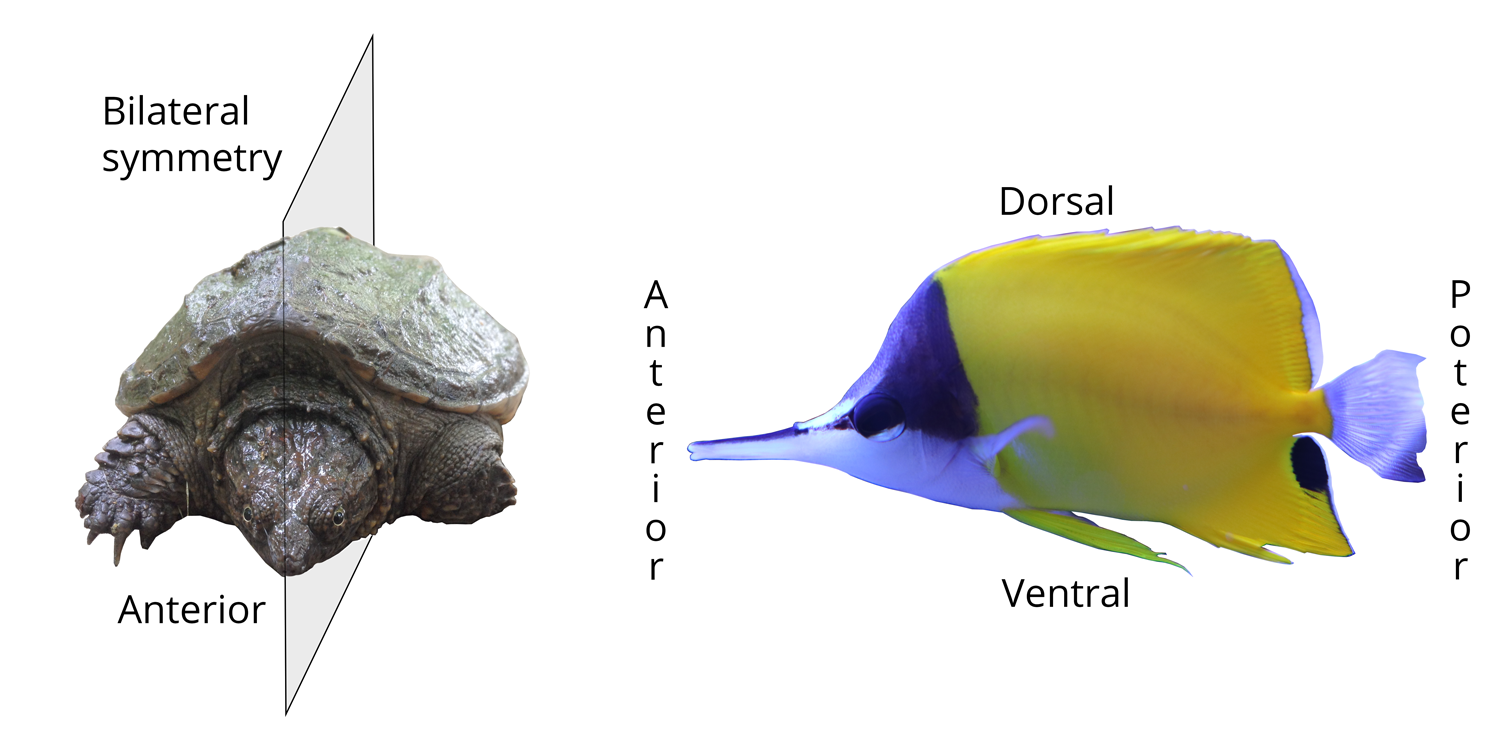
Cnidaria Digital Atlas Of Ancient Life

Kingdom Animalia Cnidaria Corals Sea Anemones Jelly Fish Box Jellies Hydra Sea Fans Phylum Cnidaria 3000 Species General Characteristics Have Ppt Download

Ppt Cnidarians Powerpoint Presentation Free Download Id 5502092

Cnidarians Advanced Ck 12 Foundation

Phylum Cnidaria Body Symmetry Study Com

Phylum Cnidaria Body Symmetry Study Com

Difference Between Cnidaria And Ctenophora Definition Characteristics Similarities And Differences Cnidaria Similarities And Differences Similarity

Cnidaria Digital Atlas Of Ancient Life

Phylum Cnidaria Body Symmetry Study Com

Phylum Cnidaria Body Symmetry Study Com

1 Unit 4 2 Phylum Cnidaria 2 Phylum Cnidaria Radial Symmetry Mouth At Oral End Surrounded By Tentacles One Opening Into And Out Of Gastrovascular Cavity Ppt Download
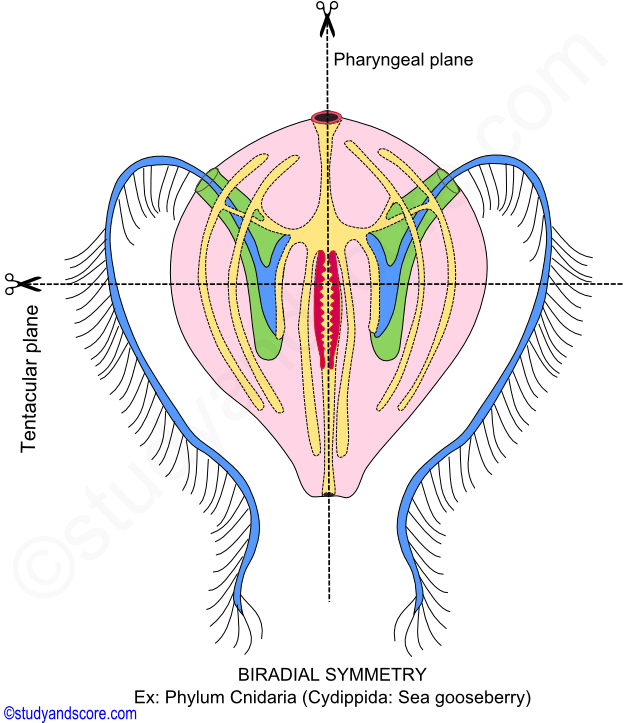
Symmetry In Animals Types Of Symmetry Bilateria And Radiata Study Score
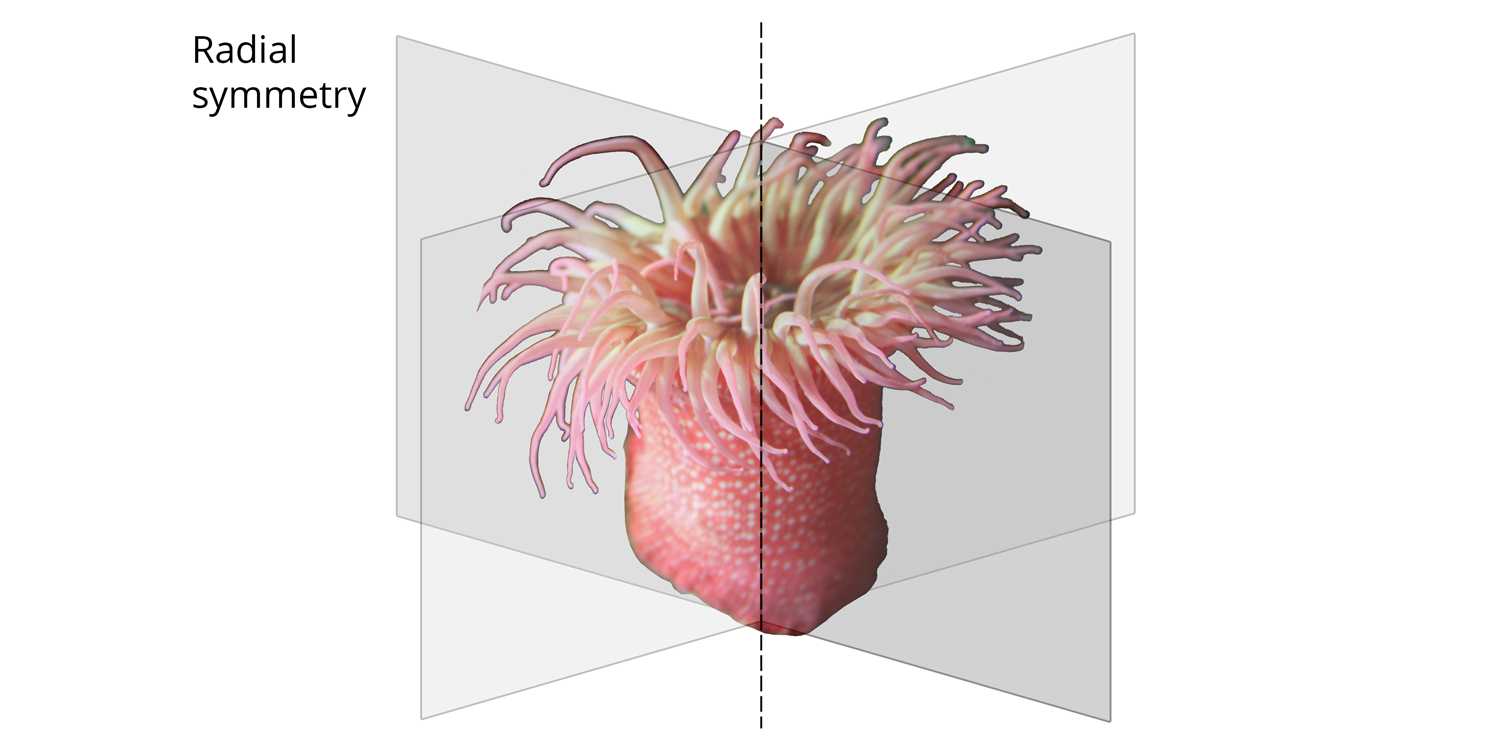
Cnidaria Digital Atlas Of Ancient Life
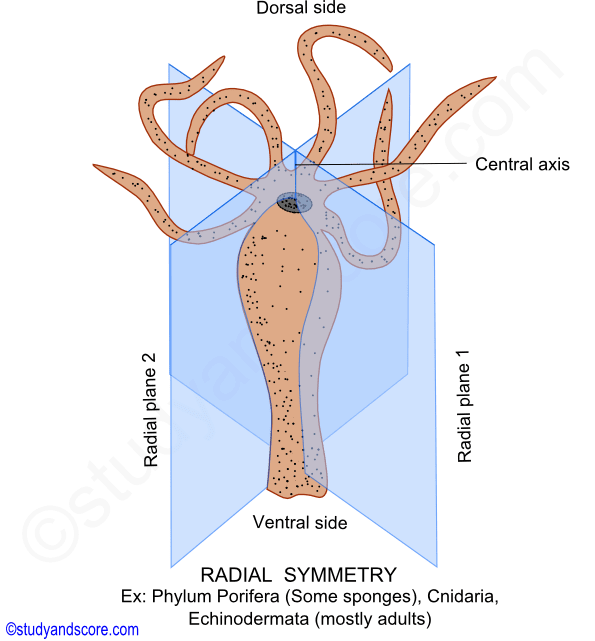
Symmetry In Animals Types Of Symmetry Bilateria And Radiata Study Score
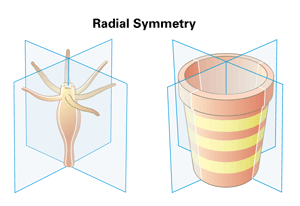

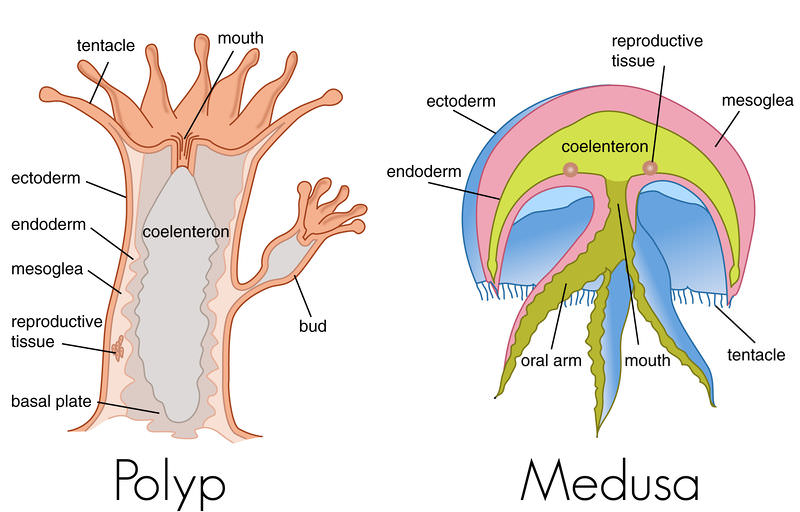
Comments
Post a Comment